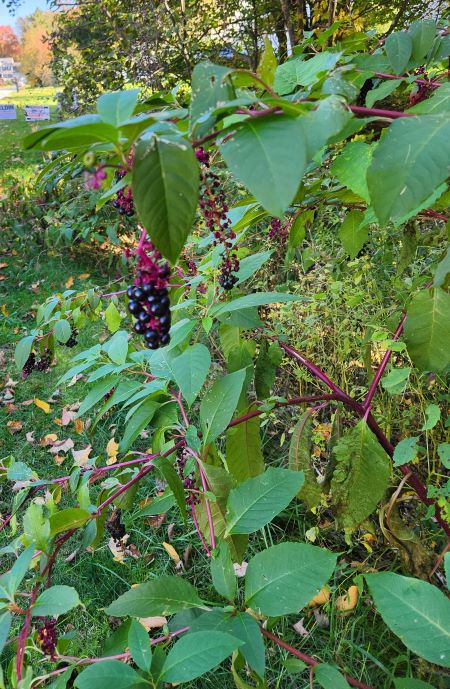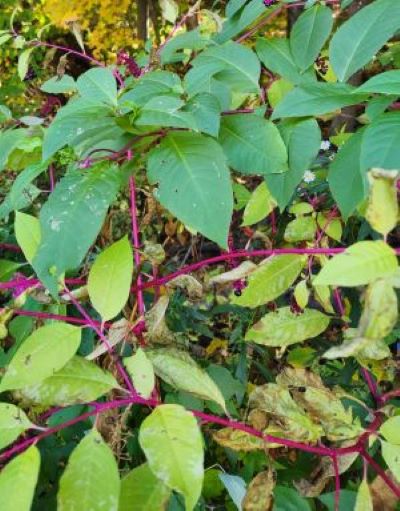Pokeberry is a highly versatile plant with a wide range of uses. Although it is often considered a weed due to its rapid growth and invasive tendencies, it has also been used in traditional medicine for centuries. In addition to its medicinal properties, pokeberry is also used for food and dye. Due to its poison, I am not one to use this plant. I do not support medicinal use or culinary use, there are so many other wild plants I see no reason to mess with the pokeberry poison plant.
Common Names:
Pokeberry is known by several different common names, including poke, poke salad, inkberry, pigeonberry, and pokeberry weed.
Description:
Poke weed is an herbaceous perennial plant that can grow up to 10 feet tall under ideal conditions. The plant typically grows in disturbed areas such as fields, roadsides, and forest edges.

The leaves of poke weed are simple and alternate, with a length of 6 to 12 inches and a width of 2 to 6 inches. They are smooth and ovate, with a pointed tip and a smooth margin. The leaves are typically green but may take on a reddish or purplish tint as they mature.
The flowers of poke weed are small, white to greenish white in color, and are arranged in long, drooping clusters called racemes. The fruit of poke weed is a dark purple to black, juicy berry that is about the size of a pea. The berries contain a dark red juice that can stain skin and clothing.
Range:
Pokeberry is native to North America and can be found throughout the eastern and central regions of the United States.
Habitat:
It prefers moist, fertile soil and is commonly found in fields, pastures, and along roadsides.
Poison Part:
While the berries of pokeberry are edible when cooked properly, the plant is highly toxic and can be deadly if consumed in large quantities. The root, stem, leaves, and unripe berries contain high levels of toxins, including saponins and lectins. Pokeberry poison plant .

Symptoms of Poison:
Ingesting pokeberry can cause a wide range of symptoms, including nausea, vomiting, diarrhea, abdominal pain, and dehydration. In severe cases, it can lead to respiratory failure and death.
Conservation Status:
Pokeberry is considered a species of least concern by the International Union for Conservation of Nature (IUCN). It is a highly adaptable plant that can
thrive in a wide range of environments and is not currently threatened by extinction.
Notes of Interest:
In addition to its medicinal and culinary uses, pokeberry has also been used as a natural dye for textiles. The deep purple color of the berries can be extracted and used to dye fabric, yarn, and other materials.
Pokeberries should be handled with care due to the toxicity. It is important to properly cook any berries before consuming them and to avoid ingesting any other part of the plant. It’s important to note that while poke weed can be used for medicinal purposes, it is also toxic and can cause severe gastrointestinal distress if ingested in large amounts. With its versatility and unique properties, pokeberry remains an important plant in North American ecology and culture.
Back to poison plant index
Sources:
- “Phytolacca americana.” USDA Plants Database. https://plants.usda.gov/core/profile?symbol=PHAM
- “Phytolacca americana.” IUCN Red List of Threatened Species. https://www.iucnredlist.org/species/164220/1035237
- “Pokeberry: A North American weed with potential.” The Herbal Academy. https://theherbalacademy.com/pokeberry-a-north-american-weed-with-potential/
- “Pokeberry.” Missouri Botanical Garden. https://www.missouribotanicalgarden.org/PlantFinder/PlantFinderDetails.aspx?taxonid=279257&isprofile=0&cv=5&mobile=0&source=return&index=2